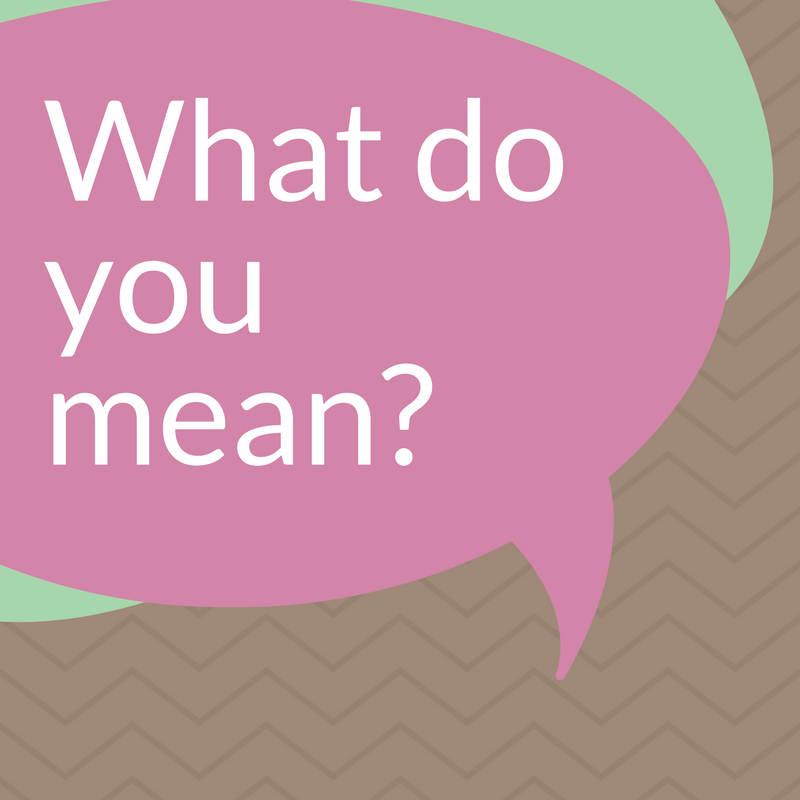
Meta Messages
Meta Messages are messages within messages. A meta-message is the underlying message in what we say and do — all the nonverbal cues (tone of voice, body language, gestures, facial expression, etc.) that carry meaning that either enhance or disallow what we say in words.
In NLP one of the primary principles is that the meaning of the communication to another person is what the person understood it to be, regardless of what was intended by the sender.
Meta messages are the part of the message used for interpretation of the message. Herein lies the source of clarity or confusion between what a person says and what they meant or intended.
Understanding meta-messages, both as they are presented through our communication and as we interpret another’s communication helps clarify the intended understanding of the message itself.
In most cases communication that is purely verbal content is free of meta-messages. The meta-message relates to the nonverbal at a different level from the content. For example, a yellow highlighter marking out a key phrase in a text is a case of a meta-message. Punctuation can also be a meta-message. The medium in which a message is being sent can be a meta-message. A courier indicates a different level of importance than an email.
Because meta-messages are typically nonverbal they are often outside the awareness of both the sender and receiver. Developing the skill to read and monitor your own and others’ meta-messages is probably one of the key essential communication skills.
The purpose of the meta-message is to inform the listener as to what type of message the speaker is sending and how best to understand or receive that message. We use meta-messages to decode the meaning in communication. Depending on how the message is experienced, one statement could have different meanings based on the interpretation of the meta-message.
Also, a meta-message may communicate information about 1. the state of the sender or receiver, 2. the status of the sender or receiver, 3. the type of content in which the communication is taking place.
Rapport factors heavily into how meta-messages are received. Physical cues, such as body posture, voice tone, and tempo, eye contact are indicators of both the inner state and status between two people.
Context is relevant in meta-messages. For example, corporate attire indicates a certain type of formality. In a work context, when someone takes off their jacket and rolls up their sleeves the meta-message in that context shifts.
For example: say each sentence aloud and emphasize the bold font word and notice how your experience of the phrase changes.
“You should not be doing that here.”
“You should not be doing that here.”
“You should not be doing that here.”
“You should not be doing that here.”
“You should not be doing that here.”
Based on voice inflection the message takes on different meaning relating to a level of emphasis; you (identity) should not (beliefs and values) be doing (capabilities) that (behavior) here (environment). It is the presence or lack of such meta-messages that frequently determines whether or not the messages reaches the listener in the intended way.
Culture plays a factor in meta-messages. Studies show that in informal settings the French touched each other on the average of about 110 times per hour while the English touched each other only an average of three times per hour.
The geographical relationship between group members is also a nonverbal influence on the group process. For example sitting in a circle encourages certain kinds of feedback versus sitting opposite one another positioned between a desk. This level of meta-message is called Psychogeography.

When done please take the time to reflect on the lesson and post a comment or question below. What was your reaction to the videos? What insights did you gain? What questions arose for you?
Also, consider responding to the comments of others to start a dialogue.
After you have posted your comment hit the Mark Complete Button and move on to the next lesson.
Responses
You must be logged in to post a comment.

The Structure of a Meta Message, The Class of Behavior Slide slide is a great example for the distinction of “play vs aggression” meta message which is very useful to know and apply to a variety of circumstances. Another great context is relevant example is the corporate formal attire vs a situation when the jacket comes off and the sleeves are rolled up – an example of lets get working,
Meta Messages take on different meanings in different context. They are non verbal and how the speaker is sending and how best to understand and receive the message. The meta message decodes the meaning in the communication.